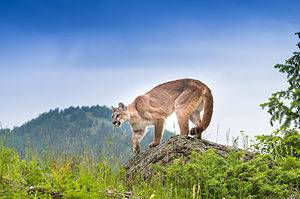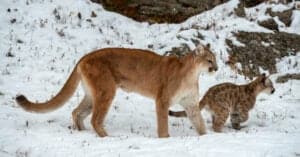Mountain lions are one of the most well-known wildcats in the Western Hemisphere. Ranging from North America down to South America, they’re a common species in many regions and ecosystems. This includes many states in the United States. Interested in learning more about where and how many mountain lions live in California? Keep reading below!
About Mountain Lions
The mountain lion is a large species of cat that is native to North America and South America. They can be found as far north as Canada and as far south as the Andes. If you compare them to other terrestrial mammals in this region, the mountain lion is the most widely diverse. They’re highly adaptable and can thrive in almost every ecosystem in the Western Hemisphere. This has led to the mountain lion as earning the title as the animal with the most common names. Puma, panther, catamount, ghost cat—these are just a few of the common names for mountain lions.
Mountain lions are the second largest wildcat in the Western Hemisphere. The first is the jaguar, who they share many habitats with. However, you won’t see these top predators together because the cougar is secretive and spends its time alone. In fact, you usually won’t see a mountain lion at all! This isn’t just because they’re nocturnal, however, but because they’re ambush predators. Mountain lions rely on the element of surprise to catch their prey, so they don’t often stay where you can see them. This ambush attitude allows them to catch a variety of prey, from deer to mice.
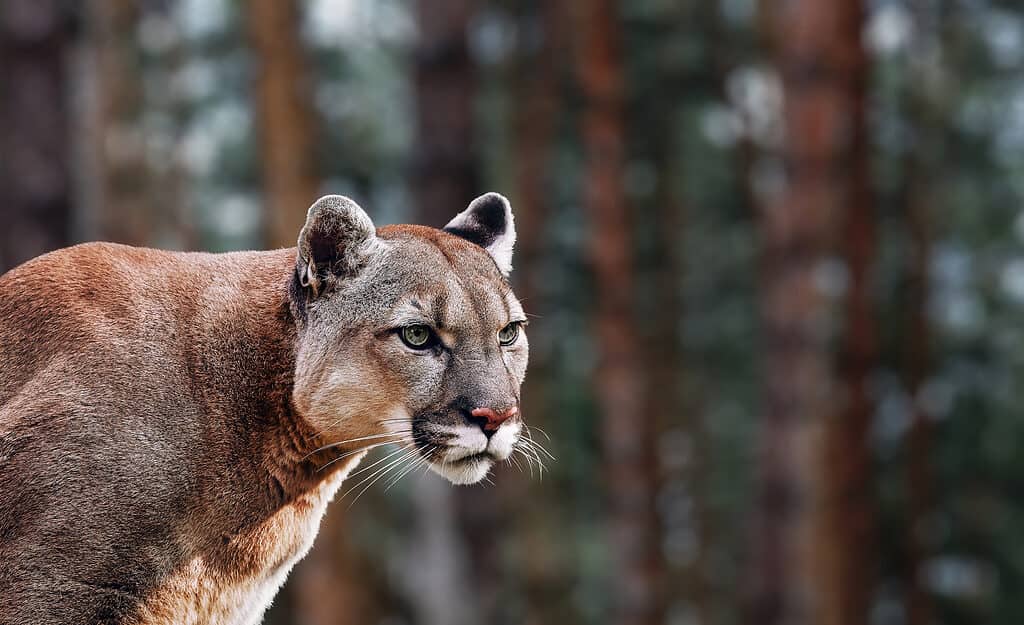
Mountain lions live in nearly every environment.
©Evgeniyqw/Shutterstock.com
California Mountain Lion Population
Although mountain lions are a plentiful species in North America and South America, this isn’t the case in every area. In California, mountain lions are listed as a threatened species, meaning that they are at risk of becoming endangered or even extinct in the area.
Because mountain lions are so secretive, it can be difficult for scientists to gather an exact number to describe the population of mountain lions in California. This is made more difficult when considering how large and diverse the state of California is.
However, through decades of studies, the California Department of Fish and Game (CDFG) has been able to identify approximately 4000 to 6000 mountain lions living in the state.

While plentiful in North America, mountain lions are a threatened species in California.
©Evgeniyqw/Shutterstock.com
Where Do Mountain Lions Live in California?
As mentioned above, mountain lions can survive and thrive in a variety of areas. From frigid mountains to warm rocky areas, they can be found almost every in the Western Hemisphere, and California is no exception.
Mountain lions can be found almost everywhere in California. The only places where this wild cat may be absent are in the Central Valley and the desert habitats in the southeastern area of the state.
Typically, if you’re looking to see if a mountain lion lives in your area, look at the deer population. In much of the western hemisphere, there are also mountain lions wherever there are deer.
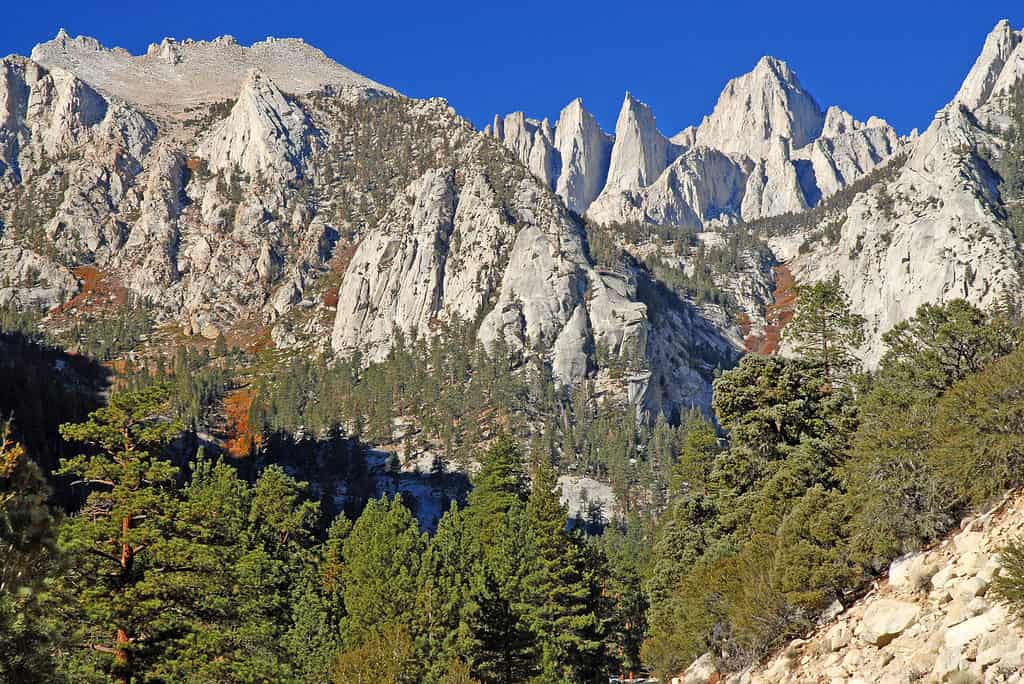
Despite being threatened in the area, mountain lions can be found everywhere in California. Mountain lions live in Mount Whitney (pictured).
©nyker/Shutterstock.com
Have Mountain Lions Attacked People in California?
Although mountain lions prefer to stray away from humans, deforestation and the growing spread of urban areas have made it difficult to minimize human and cat interactions. This has resulted in some attacks, although they are extremely rare.
According to the CDFW, in the past several decades since 1986, there have only been 22 confirmed attacks on humans by mountain lions. Out of 22 total attacks, only three were fatal. An attack has not happened in several years, either, with the last occurring in 2004.
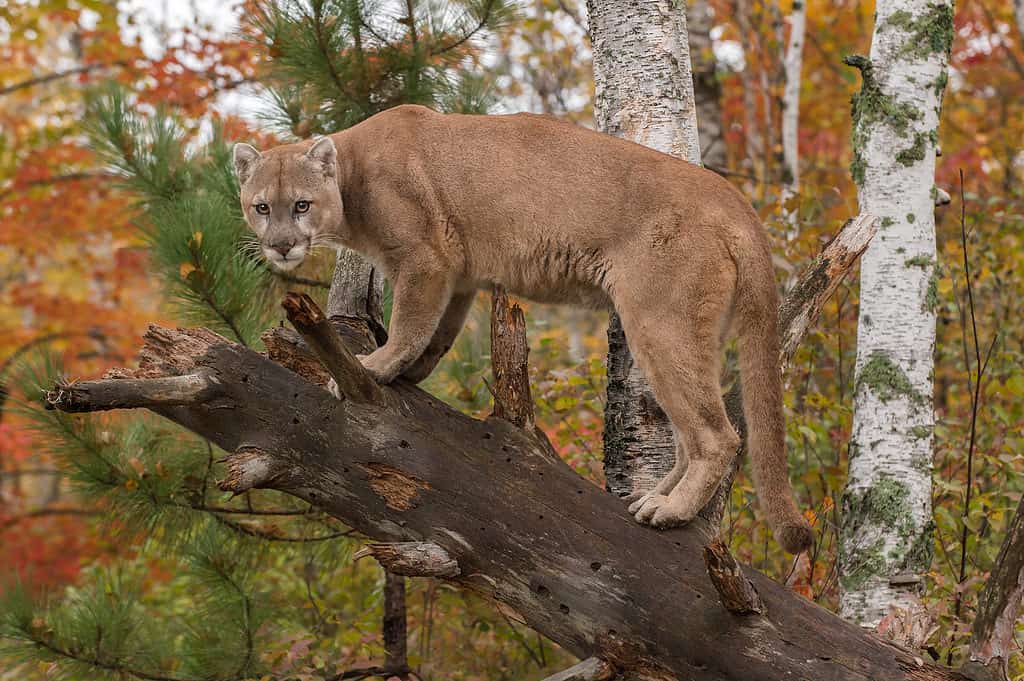
Mountain lions prefer to avoid humans, but attacks do happen.
©Geoffrey Kuchera/Shutterstock.com
Laws Related to Mountain Lions in California

Hunting mountain lions in California has been banned since 1990. Another place you can see mountain lions is Sutter Buttes (pictured).
©S. Graue/Shutterstock.com
As you learned earlier, the mountain lion is considered to be a specially protected mammal in California because of its threatened status. This means that there are laws set up to help protect this population. As a result, it is illegal to injure or kill a mountain lion. Possessing, selling, or transporting mountain lions or anything related to them, such as their offspring or parts, is also illegal.
Hunting mountain lions has been banned since 1990. However, certain special situations will allow people to hunt a single mountain lion. This requires the mountain lion to have injured or killed any animals owned by that person, such as livestock or pets.
What to Do if You See a Mountain Lion
The best way to minimize harm to yourself and mountain lions in California is to know what to do in case you see one.
Remember earlier how we said that mountain lions are ambush predators? This means they’re not interested in hunting you down and fighting unless you mess with their offspring. This means that the best thing you can do is never turn your back on them or do anything to make yourself smaller, such as crouching. Instead, your goal is to make yourself as large, loud, and threatening as possible. Wave your arms and speak in a loud, firm voice.

If you see a mountain lion, don’t make yourself smaller. Hold ground, maintain eye contact, and back away slowly if you attempt to retreat.
©Chris Alcock/Shutterstock.com
The photo featured at the top of this post is © Warren Metcalf/Shutterstock.com
Thank you for reading! Have some feedback for us? Contact the AZ Animals editorial team.




